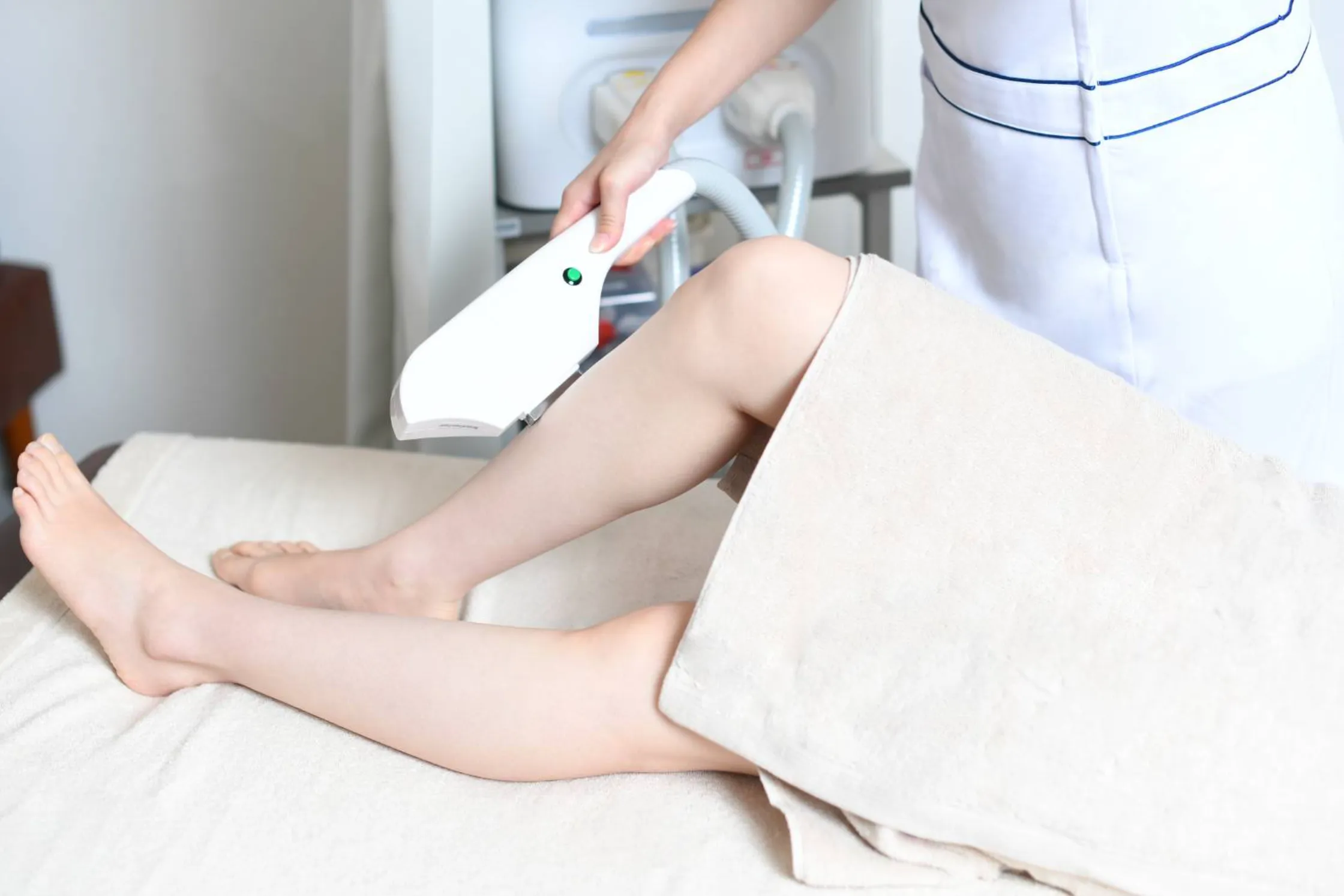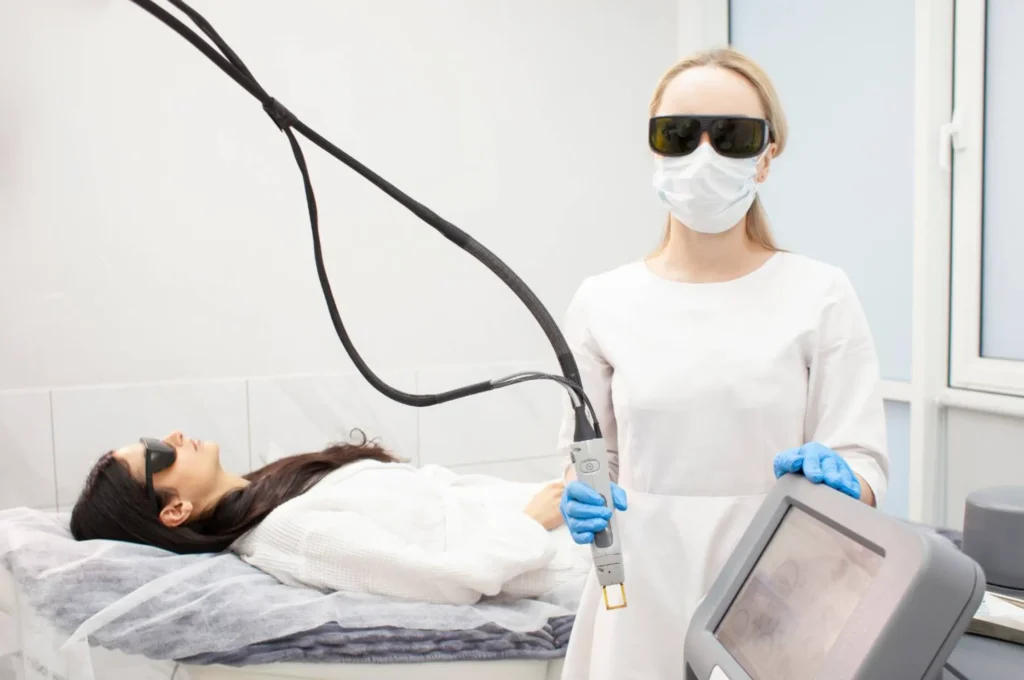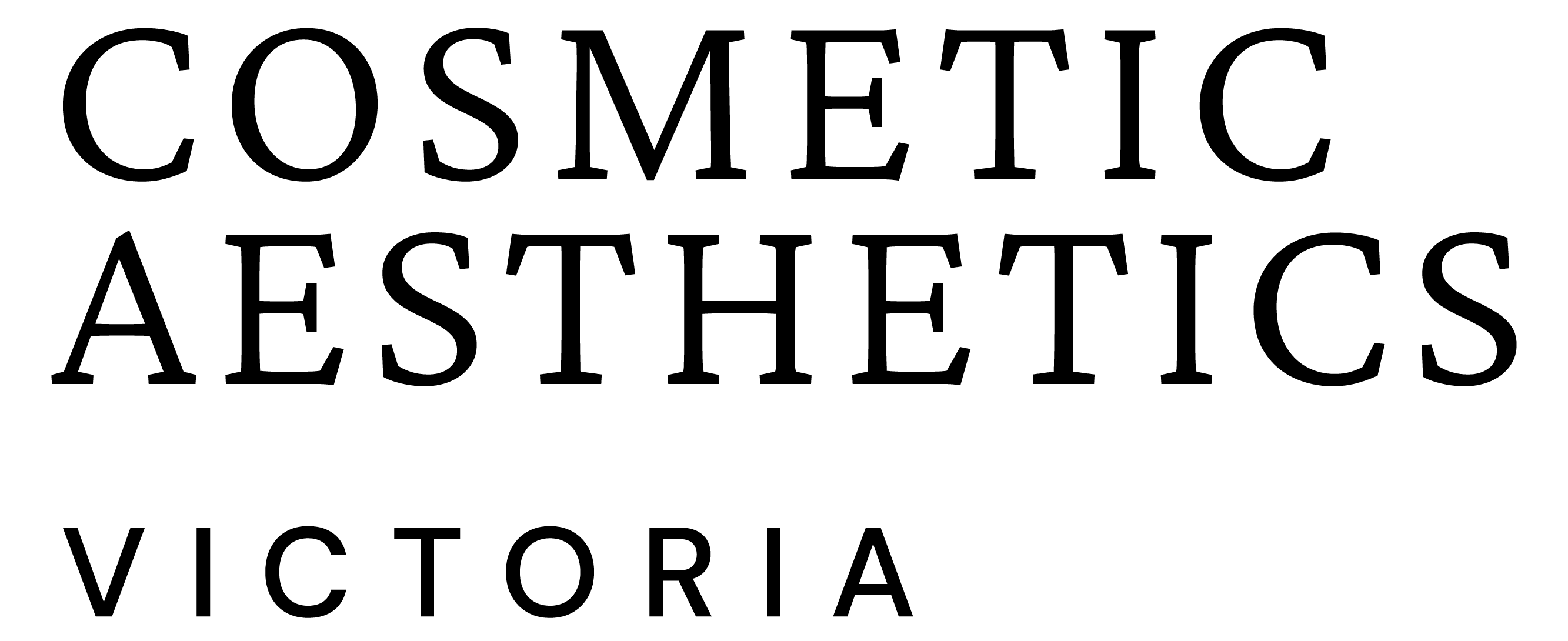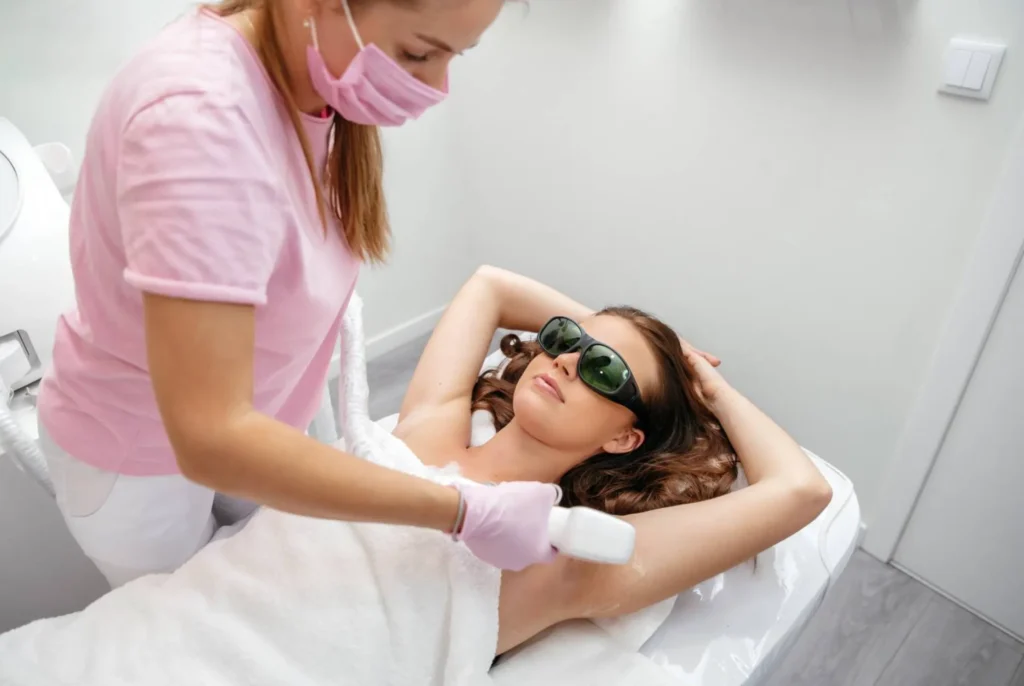
Laser Hair Removal For Different Skin Types: What You Should Know
If you’ve ever found yourself tangled in the constant battle against unwanted hair, you’ve likely considered laser hair removal as a possible solution. But before you take the plunge, have you ever thought about how your skin type plays a role in the effectiveness of the treatment? It’s a question I often get from clients, and one that I’ve experienced firsthand. As a practitioner, I’ve seen how the right choice of laser can make all the difference, especially when it comes to skin tones.
Whether you have fair, olive, or dark skin, understanding the unique way each skin type interacts with different lasers is key to achieving the best results safely and effectively. In this post, I’ll share everything you need to know about laser hair removal for different skin types, from choosing the right technology to avoiding common risks. You’ll also hear about real-life experiences, including my own, to help you feel confident in your decision.
Let’s get straight to the point: laser hair removal doesn’t need to be one-size-fits-all. With the right knowledge and the right laser, you can say goodbye to the hassle of shaving and waxing for good, no matter your skin type.
How Skin Tone Affects Laser Hair Removal And What You Should Know?
When it comes to laser hair removal, one size definitely does not fit all. As someone who’s worked with clients from all walks of life at my clinic, I’ve seen firsthand just how much skin type impacts the treatment. Whether you’re someone with fair skin who’s always been told they’re the ideal candidate, or you have darker skin and are a little more wary of laser treatments, understanding how skin tone plays a role in laser hair removal is crucial.
The Science Behind Laser Hair Removal: How Different Skin Types React
Laser hair removal works by emitting concentrated light that targets the melanin (pigment) in the hair. This energy is absorbed by the hair follicle, disabling it and preventing future hair growth. However, the way this light interacts with your skin and hair can vary drastically depending on your skin tone.
For those with fair skin, the high contrast between skin and hair makes the procedure more straightforward. The laser can easily differentiate between the light skin and dark hair, which allows for efficient and safe targeting of the hair follicles. In my experience, these individuals often require fewer sessions, and the results are typically quicker.
On the flip side, darker skin presents more challenges. Darker skin types, especially those with Fitzpatrick Types IV-VI (such as those with olive or deep skin tones), have more melanin in their skin. This means that the laser has to be used carefully, as the energy can be absorbed by the skin, potentially causing burns or pigmentation issues. It’s one of the reasons why many people with darker skin types are cautious about trying laser hair removal. I’ve often reassured my clients by explaining the importance of using the correct laser for their skin tone and the technology advancements that have made it safer than ever.
Why Skin Tone Matters: The Fitzpatrick Skin Type System Explained
When I first started in this field, I had to quickly learn about the Fitzpatrick Skin Type Classification system. This system divides skin into six types based on how it reacts to the sun. It’s a key tool for choosing the right laser for your treatment and ensuring your safety during the procedure.
| Fitzpatrick Skin Type | Description | Sun Reaction |
| Type I | Very fair skin | Always burns, never tans |
| Type II | Fair skin | Burns easily, tans minimally |
| Type III | Medium skin | Burns moderately, tans gradually |
| Type IV | Olive skin | Burns minimally, tans easily |
| Type V | Brown skin | Rarely burns, tans deeply |
| Type VI | Black or deeply pigmented skin | Never burns, deeply pigmented |
In my experience, clients with Types I-III (lighter skin tones) tend to have fewer complications. Types IV-VI (darker skin) require more careful handling due to the higher melanin content, which can absorb more energy and potentially lead to adverse reactions if not managed properly.

Laser Hair Removal For Fair And Sensitive Skin
Laser hair removal is often seen as the gold standard for hair reduction, especially for those with fair skin. But, as with any cosmetic treatment, understanding how different skin types interact with lasers is vital for optimal results. If you have fair or sensitive skin, you’re likely to experience fewer complications, but there are still nuances you need to consider.
Best Lasers For Light Skin Tones: What Works Best For Pale Skin
I’ve treated numerous clients with fair skin over the years, and the great thing about this skin type is that the high contrast between your skin and dark hair makes the laser’s job much easier. The best laser for pale skin tends to be the Alexandrite laser (755 nm). This laser is highly effective on lighter skin tones because it has a shorter wavelength, which is readily absorbed by darker hair, and the skin absorbs very little of the energy. This makes it both effective and relatively safe for fair-skinned individuals.
If you have fair skin but are a bit more sensitive, Diode lasers (810 nm) also work well. They are slightly longer in wavelength, which allows for deeper penetration into the skin, targeting the hair follicle more effectively without affecting the surrounding tissue. I’ve noticed that for individuals with sensitive skin, Diode lasers tend to offer a balance of efficiency and minimal discomfort.
One example comes to mind: a client of mine, Samantha, had fair skin with a few red patches from previous treatments. After using the Alexandrite laser for her session, she reported minimal irritation and was thrilled with the results after just two sessions. It’s a great choice for those looking for quick and lasting hair reduction.
Choosing The Right Technology For Sensitive Skin: Minimising Discomfort And Side Effects
It’s important to note that sensitive skin doesn’t just mean fair skin—it refers to skin that may react more easily to treatments due to factors like conditions such as eczema or rosacea. Sensitive skin types require a bit more care during the laser hair removal process.
I’ve found that using a longer-pulse laser with cooling systems in place makes all the difference. For example, Diode lasers work wonders for fair but sensitive skin, but the addition of cooling technologies such as air cooling or contact cooling helps soothe the skin during the procedure, reducing the chance of redness, swelling, or burns. It’s like wrapping your skin in a cool towel after a warm day at the beach – it just works.
Many clients are concerned about the pain aspect, too. In my experience, topical numbing creams can be applied to the treatment area to enhance comfort, especially for more sensitive skin. I’ve also seen that post-treatment care, like applying aloe vera gel or calming creams, can help reduce redness and inflammation.
Laser Hair Removal For Medium And Olive Skin Tones
Medium skin tones and olive skin can be trickier to treat than fair skin, but the results can be equally fantastic with the right approach. People with these skin tones often fall into the Fitzpatrick Types III-IV range, meaning their skin tends to tan well and burns less often than fair skin, but they still face some challenges when it comes to laser hair removal.
What Makes Medium Skin Unique: How Laser Technology Should Be Tailored?
I’ve had the opportunity to work with many clients in the Fitzpatrick Type III-IV range, and one thing I’ve noticed is that medium skin tends to absorb more laser energy than fair skin. This is because the melanin content is higher, which can sometimes lead to overheating of the surrounding skin. To make sure the treatment is both effective and safe, it’s important to choose the right laser wavelength and settings.
The Diode laser (810 nm) is often the go-to choice for medium skin tones. It strikes a balance between being effective for hair removal while being gentle enough not to cause any unwanted skin reactions. I’ve treated clients with medium tones using this laser, and they’ve often reported a smoother experience with fewer side effects compared to other lasers.
Another option that works well for olive skin is the Nd:YAG laser (1064 nm). This laser has a longer wavelength, which allows it to penetrate deeper into the skin, targeting the hair follicle without affecting the epidermis. For example, Amira, a client with olive-toned skin, underwent treatment with Nd:YAG and saw exceptional results with no irritation. It’s a safe and effective choice for those with medium to olive tones, especially when adjusted properly.
Best Lasers For Olive Skin: What You Need To Know For Effective Treatment?
Olive skin tends to fall between medium and dark skin tones. While it can tan easily, it also has a higher risk of post-inflammatory hyperpigmentation (PIH) when exposed to heat from lasers. This is where the Nd:YAG laser really shines. It’s specifically designed to minimise the risk of pigmentation changes while still targeting the hair follicle effectively.
For individuals with olive skin, the key is moderation. Lower energy settings combined with cooling techniques provide a great way to treat the area without causing excessive heat damage. My own experiences with treating clients with olive skin have been incredibly positive when I’ve used these approaches.
One particular success story involved Ethan, a client with olive skin who had been hesitant to try laser hair removal due to concerns about pigmentation changes. After a thorough consultation, we decided on Nd:YAG with a moderate energy setting and cooling system. After three sessions, Ethan saw a significant reduction in hair growth with zero signs of hyperpigmentation or scarring. This treatment was a real win for both of us!
Laser Hair Removal For Darker Skin Types: Addressing Challenges And Risks
While laser hair removal has become a popular and effective treatment for hair reduction across all skin types, those with darker skin (Fitzpatrick Types IV-VI) face unique challenges. As someone who has worked with clients from a variety of backgrounds, including African American and Asian clients, I’ve seen both the advantages and challenges that come with darker skin tones. Darker skin contains more melanin, which can absorb more laser energy, increasing the risk of adverse reactions if the treatment isn’t carefully tailored.
Why Laser Hair Removal For Dark Skin Requires Special Care?
When treating dark skin, I always remind my clients that melanin is both a blessing and a curse. On one hand, it provides better photoprotection, meaning dark skin is less likely to burn from sun exposure. However, when it comes to lasers, melanin also competes with the hair follicle for laser energy. This means that the laser energy might end up being absorbed by the skin instead of the hair follicle, leading to an increased risk of burns, pigmentation changes, and scarring if the wrong type of laser is used or if the settings are too high.
This is why I recommend using long-pulsed Nd:YAG lasers (1064 nm) for dark skin. This laser has a longer wavelength, which allows it to bypass the epidermis and focus on the hair follicle, minimising the risk of damage to the skin. The Nd:YAG laser is often considered the gold standard for dark skin types, and I’ve seen it work wonders on my clients with deep skin tones, providing smooth results without the common complications seen with other lasers.
A case that stands out is Tariq, a client with dark skin who had heard of the risks associated with laser hair removal. After discussing his concerns, I assured him that with the right technology and settings, we could achieve safe and effective results. We used the Nd:YAG laser, with a longer pulse duration and lower energy settings, and the results were fantastic—he had a noticeable reduction in hair growth and no signs of hyperpigmentation or scarring.
The Best Laser For Dark Skin: Understanding The Nd:YAG Laser
The Nd:YAG laser is widely regarded as the best choice for dark skin, particularly because of its 1064 nm wavelength. This longer wavelength allows the laser to penetrate deeper into the skin, bypassing the melanin in the epidermis and targeting the hair follicle more effectively. The result is less heat being absorbed by the skin, which significantly reduces the risk of burns, pigmentation changes, and scarring.
However, it’s not just the wavelength that makes the Nd:YAG laser a good choice for dark skin—it’s also the pulse duration. A longer pulse duration allows the energy to be spread over a longer period of time, allowing the heat to dissipate and reducing the risk of heat damage to the skin. I’ve worked with numerous clients with darker skin tones, and I’ve found that adjusting the pulse duration along with the right fluence (energy) setting ensures the laser is effective without being too harsh on the skin.
For example, Kendall, a client with African American skin, came in for a consultation after she had previously experienced pigmentation issues with other types of lasers. We used the Nd:YAG laser, adjusted the energy settings to a lower fluence, and made sure the pulse duration was longer to safely treat her skin. Kendall was thrilled with the results, as she saw excellent hair reduction without any unwanted side effects.
The Right Laser For Your Skin Type: A Comprehensive Guide
Selecting the right laser for your skin type is the first step toward achieving the best results in laser hair removal. The technology used needs to be tailored to your skin’s unique needs. Based on my experience, here’s a breakdown of the best lasers for various skin tones and how to make the right choice for your treatment.
Skin Tone And Laser Compatibility: Which Laser Works For You?
Not every laser is compatible with every skin type, and choosing the right one can make all the difference. Here’s a simple guide to the most commonly used lasers and which skin types they’re best suited for:
| Skin Tone | Fitzpatrick Types | Recommended Lasers | Notes |
| Fair Skin | I – III | Alexandrite (755 nm), Diode (810 nm), IPL | High contrast with dark hair; Alexandrite is fast and effective—diode/IPL for versatility. |
| Medium Skin | III – IV | Diode (810 nm), Nd:YAG (1064 nm) | Nd:YAG preferred for olive tones; reduces pigmentation risk. |
| Dark Skin | IV – VI | Nd:YAG (1064 nm) | Safest for deep tones; targets follicles while sparing the epidermis. |
It’s important to consider not just your skin type but also your hair type. Dark, coarse hair tends to respond better to laser hair removal because it absorbs more light, making it easier to target the follicle. Lighter, finer hair can be more challenging to treat, and multiple sessions may be required to see optimal results.
Best Laser Hair Removal For Sensitive, Dark, And Light Skin Types
In my clinic, I have treated clients with a wide range of skin tones, and the key takeaway is that customisation is crucial. There’s no one-size-fits-all solution, and I always tailor each treatment plan to suit my client’s unique needs. Here’s a quick summary of the best lasers for each skin type:
- Fair Skin: Alexandrite laser and Diode lasers are the best options. These work well because they target darker hair with minimal risk of irritation.
- Medium Skin: Diode lasers and Nd:YAG lasers are most effective. These lasers can treat medium skin with caution, ensuring minimal risk of hyperpigmentation.
- Dark Skin: Nd:YAG lasers (1064 nm) are the go-to choice. They are safest for dark skin tones, as they avoid the risk of heat damage to the skin.
By choosing the right laser for your skin type, you’re setting yourself up for a smooth and safe experience. Patch tests are an essential part of the process, especially for those with sensitive or darker skin, to ensure the best laser settings are selected for your individual skin.
How To Minimise Risks And Maximise Effectiveness?
Laser hair removal is an incredibly effective method for long-term hair reduction, but it’s not without its risks. The key to a successful treatment, especially for darker skin, lies in proper technique and careful laser selection. In my clinic, I focus on minimising side effects and maximising the effectiveness of each session by following a few essential steps.
Reducing Side Effects: Importance Of Cooling, Settings, And Professional Expertise
As anyone who’s had laser hair removal knows, the treatment can cause discomfort, especially in sensitive or darker skin types. One of the most important things I’ve learned over the years is that cooling systems are essential for protecting the skin from excessive heat. A good cooling system can make a world of difference by reducing the risk of burns and hyperpigmentation, which can be particularly concerning for clients with dark skin.
For example, contact cooling (where a cold tip is applied directly to the skin) or air cooling systems work wonders in protecting the epidermis from damage while still allowing the laser to target the hair follicle effectively. I’ve used these systems extensively in my practice, and they have helped countless clients, particularly those with medium to dark skin tones, experience a smoother, more comfortable treatment.
Additionally, proper settings are critical to avoiding side effects like burns or pigmentation issues. For darker skin types, I use longer pulse durations and lower energy fluences to ensure the laser energy is delivered gradually, allowing it to bypass the melanin in the epidermis. I’ve found that adjusting the laser settings for each client based on their skin tone is essential to reducing the risk of adverse reactions.
Pre-Treatment And Post-Treatment Care: How To Prepare For Your Session?
Before you even step into the treatment room, the pre-treatment care you follow can significantly impact your results. One of the most common mistakes people make is failing to protect their skin from sun exposure. I always recommend that my clients avoid direct sun exposure for at least two weeks before treatment. Sunburned or tanned skin is more sensitive and more prone to complications, so it’s best to come in with naturally toned skin.
For clients with darker skin tones, I also recommend avoiding self-tanners and tanning beds for a few weeks before the session. These products can artificially darken the skin and increase the chances of complications during treatment. If you’re unsure whether your skin is ready for laser treatment, don’t hesitate to call the clinic beforehand for advice.
Post-treatment care is equally important. After the session, you should expect some redness and swelling, especially for sensitive or dark skin. This is completely normal and usually subsides within a few hours to a couple of days. I always suggest using cooling gels or aloe vera to calm the skin and reduce inflammation.
You should also avoid hot showers, saunas, and vigorous exercise for a few days after treatment, as these can irritate the skin and increase the risk of side effects. SPF 30 or higher sunscreen is a must, even if you’re not planning to be out in the sun for long, as your skin will be more vulnerable to UV rays after the treatment.
The Benefits Of Laser Hair Removal Beyond Hair Reduction
While laser hair removal is primarily known for its ability to reduce hair growth over time, it also offers a host of additional benefits that many clients may not be aware of. For anyone considering the treatment, it’s important to know that it’s not just about getting rid of unwanted hair. Over the years, I’ve had clients report a variety of unexpected perks from their laser hair removal sessions.
Reducing Ingrown Hairs And Skin Irritation: How Laser Hair Removal Helps?
If you’ve ever struggled with ingrown hairs, especially those who have coarse or curly hair, laser hair removal might just be the solution you’ve been looking for. For many of my clients with darker or coarser hair, ingrown hairs are a constant issue, often leading to painful bumps, irritation, and even scarring. One of the major advantages of laser hair removal is that it targets the hair follicle directly, reducing the likelihood of hair growing back into the skin.
Take Jayden, for example, a client who came to me with recurrent ingrown hairs around his beard area. After a few sessions of laser hair removal, he was thrilled with the results. Not only did he notice a significant reduction in hair regrowth, but his skin also became much smoother with far fewer ingrown hairs. In fact, this is a benefit I often highlight for clients with thicker or curlier hair, as these hair types tend to be more prone to ingrown growth.
Can Laser Hair Removal Improve Skin Texture And Pigmentation?
Interestingly, laser hair removal can also have secondary benefits for skin texture and pigmentation. Over time, many clients report that their skin looks smoother and more even in tone, especially in areas where they previously had dark spots or pigmentation issues. This is likely due to the gentle exfoliating effect of the laser, which can help clear away dead skin cells and promote skin renewal.
I remember treating Sophie, a client who had sun damage on her upper lip and chin. After several sessions of laser hair removal, not only did she notice a reduction in unwanted hair, but her skin also appeared brighter and more even. The laser seems to stimulate collagen production in the skin, leading to improved texture. While it’s not a substitute for a dedicated skin rejuvenation treatment, many clients find that it helps with mild pigmentation issues, such as sun spots or age spots.
Laser hair removal is a safe and effective solution for long-term hair reduction across all skin types when performed with the right technology and expertise. Understanding how your skin tone affects the treatment is crucial for achieving the best results while minimising risks. Whether you have fair, medium, or dark skin, choosing the appropriate laser and following the correct pre- and post-treatment care will ensure you enjoy smooth, hair-free skin. Always consult with a qualified professional to tailor the treatment to your unique needs for the safest, most effective outcome.


